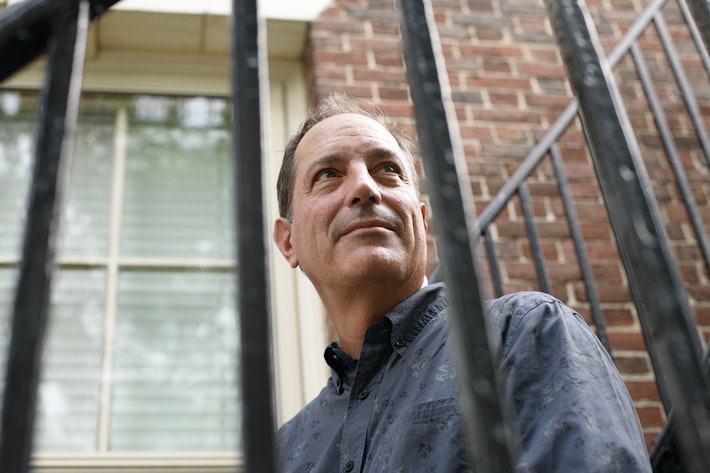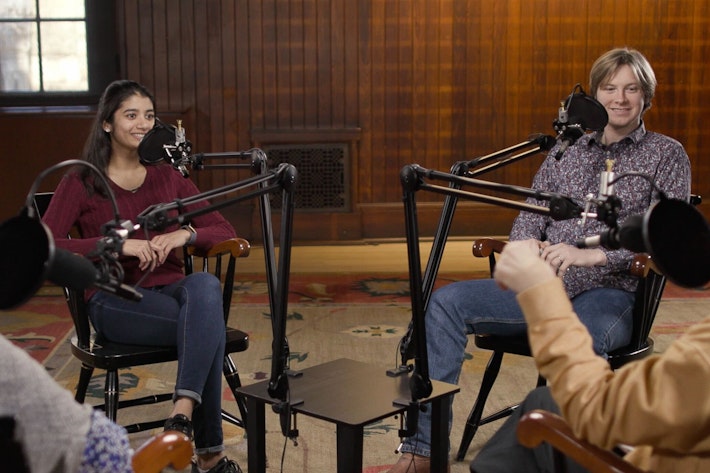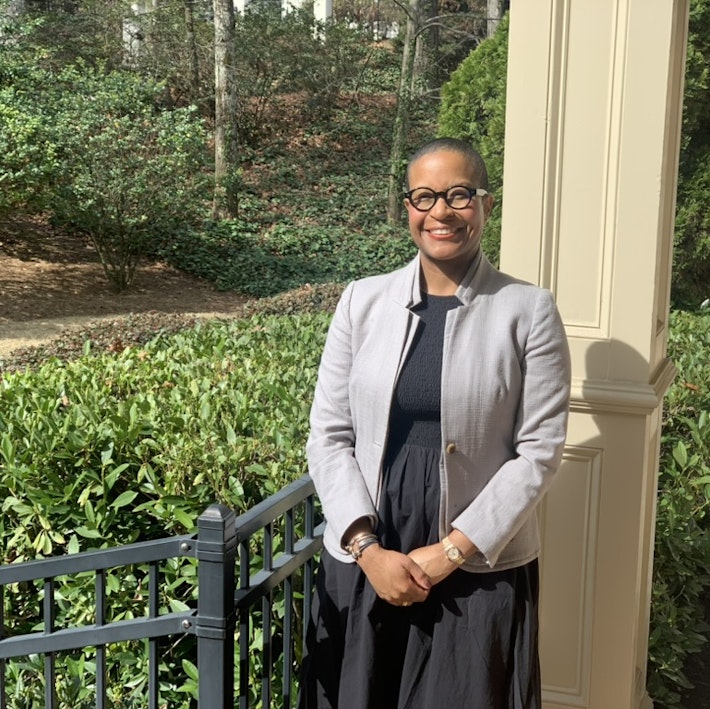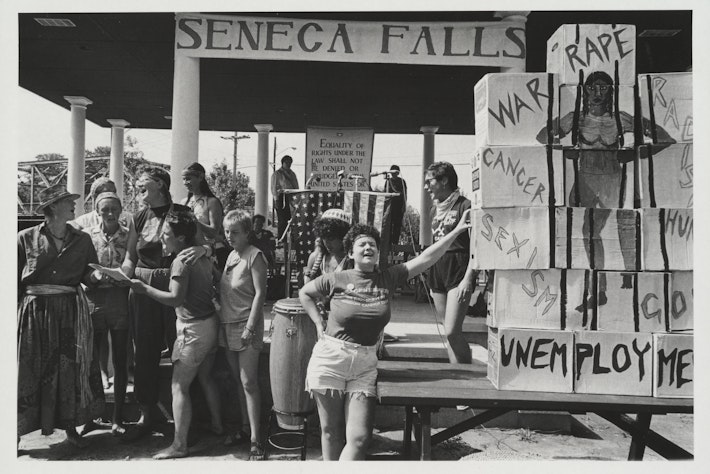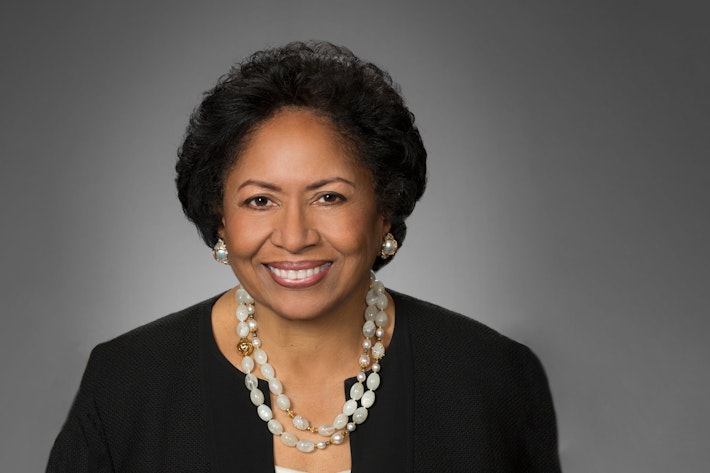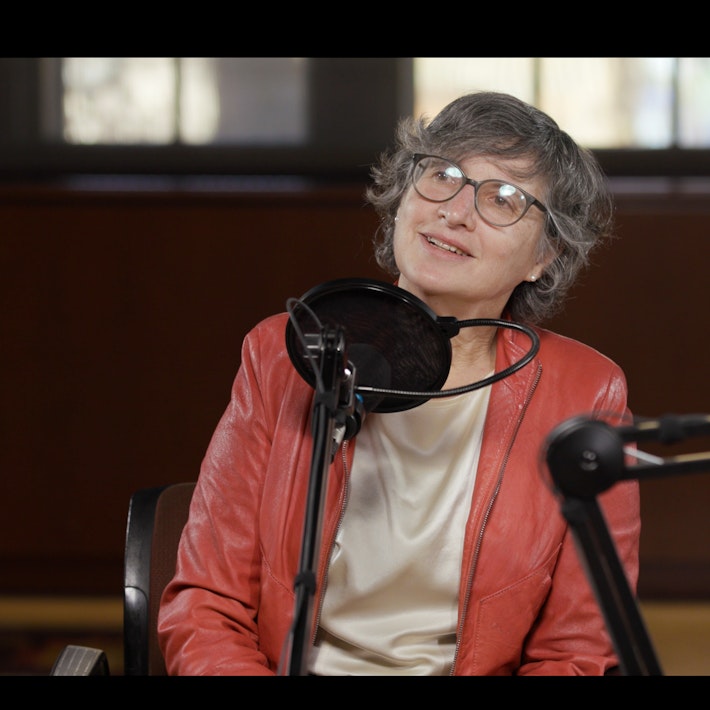Playing Fair? Title IX at 45
The exhibition Playing Fair? Title IX at 45 at the Schlesinger Library focuses on the developments and trends in women’s sports to document the law’s farreaching impact.
The night before a game, the women’s coach buys T-shirts at the school bookstore and irons the names of her players on the backs. When a new gym is built, the old gym is “given” to the women. A female referee is paid half what a male referee earns for officiating the same game. Women’s teams sell candy bars and hold bake sales to pay for travel expenses, while men’s teams travel in buses and planes chartered at their schools’ expense. Welcome to the pre–Title IX world of women’s sports.
Since its passage, in 1972, Title IX has led to a transformative amount of social change, especially in the world of athletics. Where sports were once seen as a privilege, now they are seen as a right. Millions of girls and women have lived their entire lives in a post–Title IX world of opportunities, a hugely different world from that of earlier generations of women who remember gym suits with bloomers and girls’ rules in basketball. Merrily Dean Baker, Princeton’s first female athletic director, captured it perfectly: “I was called a tomboy; my daughters are called athletes.”
Title IX’s impact has not been limited to sports. Broadly designed to address sex discrimination in all aspects of education, the law’s flexible mandate has allowed it to respond creatively to new issues as they arise. In the 1970s, Title IX supported girls who wanted to take shop classes instead of home economics, ended the practice of expelling pregnant students from high school, and challenged arbitrary quotas that limited women’s access to professional schools. Starting in the 1990s, Title IX emerged as an important tool for challenging sexual harassment and sexual violence on campus. More recently, it has entered the national debate about which bathrooms transgender students should be allowed to use in schools. Few if any of these issues were anticipated by the law’s original framers.
The exhibition
Playing Fair? Title IX @ 45 at the Schlesinger Library focuses primarily on the developments and trends in women’s sports to document the law’s farreaching impact. In 1971, only 295,000 high school girls participated in sports; now the number is above 3.2 million, approximately 40 percent of all high school athletes. Opportunities at the college level showed a similar surge, but women’s sports still lag behind men’s in all measures of participation, resources, and media coverage. Women make up 56 percent of college students but receive less than 44 percent of participation opportunities on campus. Since when is 44 percent considered equal? A celebration of how much has changed must always be balanced by the fact that we still have a long, long way to go to reach gender equity—in sports or in other aspects of American life.
This ongoing struggle is likely to hit some rocky patches in our changed political climate, but even if regulations are diluted or ignored, Title IX and the case law that supports it will remain in force. The discrimination that Title IX was designed to address is bigger and more deeply rooted than any specific administration. Think of us as signing on for the long haul. That’s the hard-won perspective of Bernice Sandler, one of the earliest proponents of Title IX, whose papers are at the Schlesinger: “I believed that if we passed Title IX it would only take a year or two for all the inequities based on sex to be eliminated. After two years, I upped my estimate to five years, then to ten, then to twenty-five, until I realized that we were trying to change very strong patterns of behavior and belief and that changes would take more than my lifetime to accomplish.”

